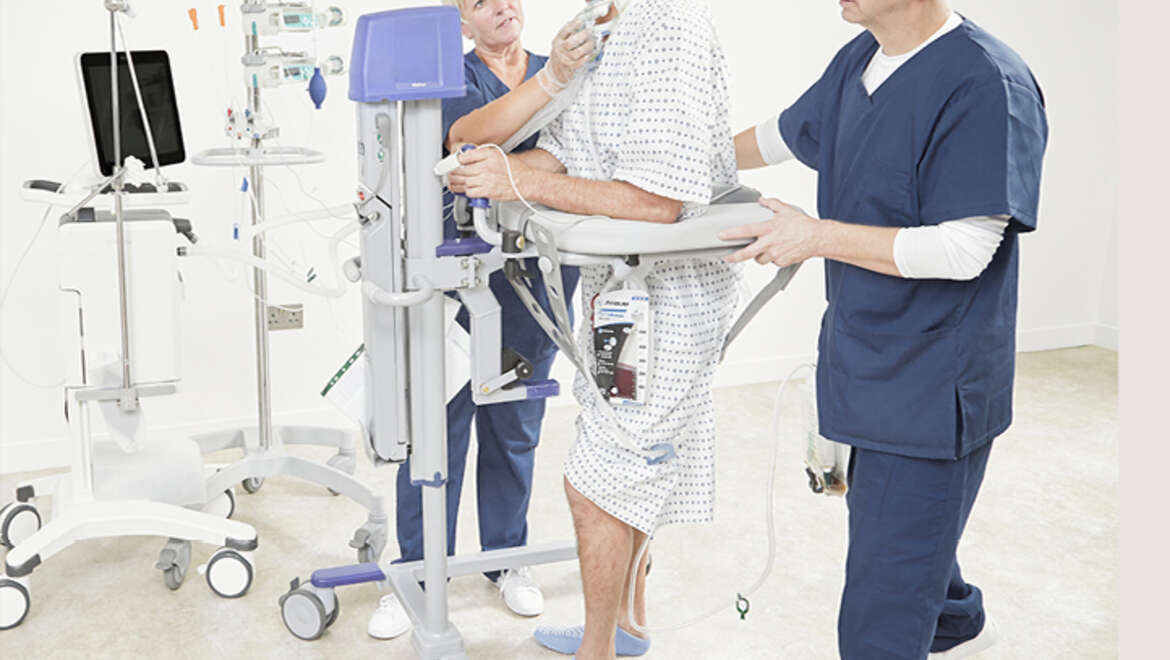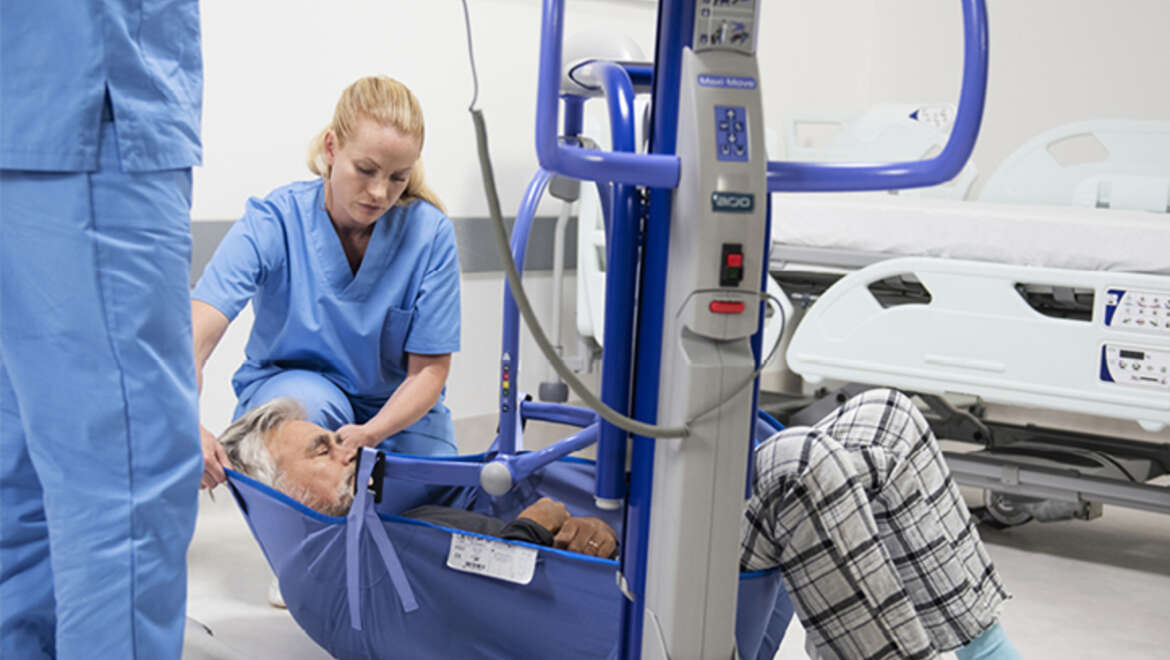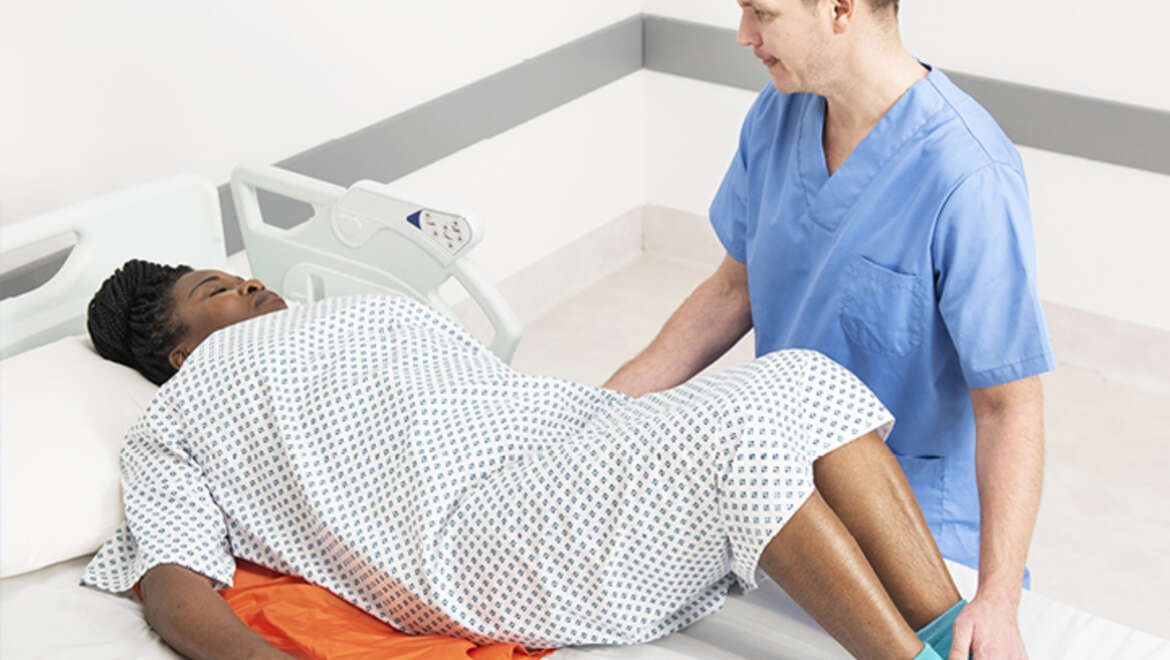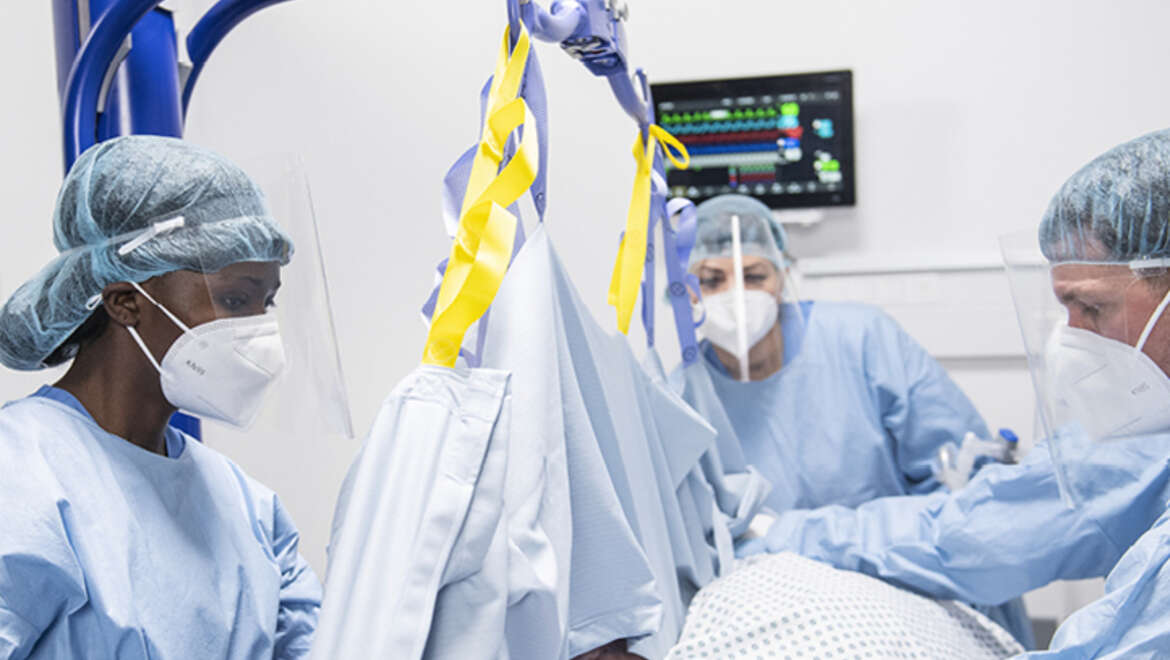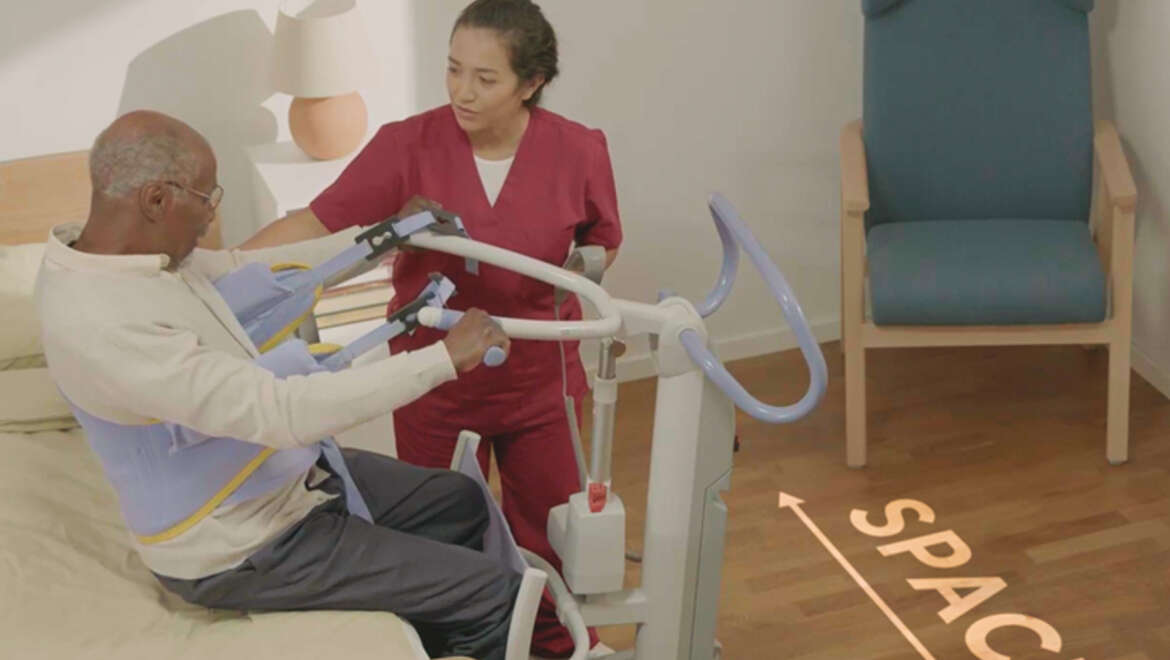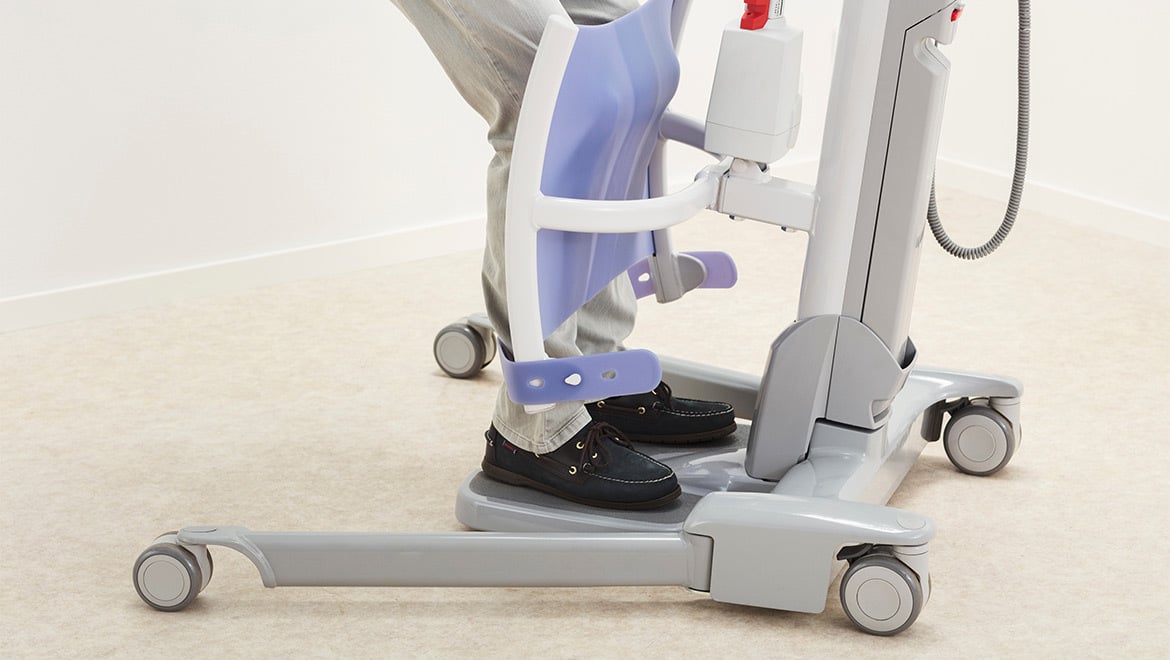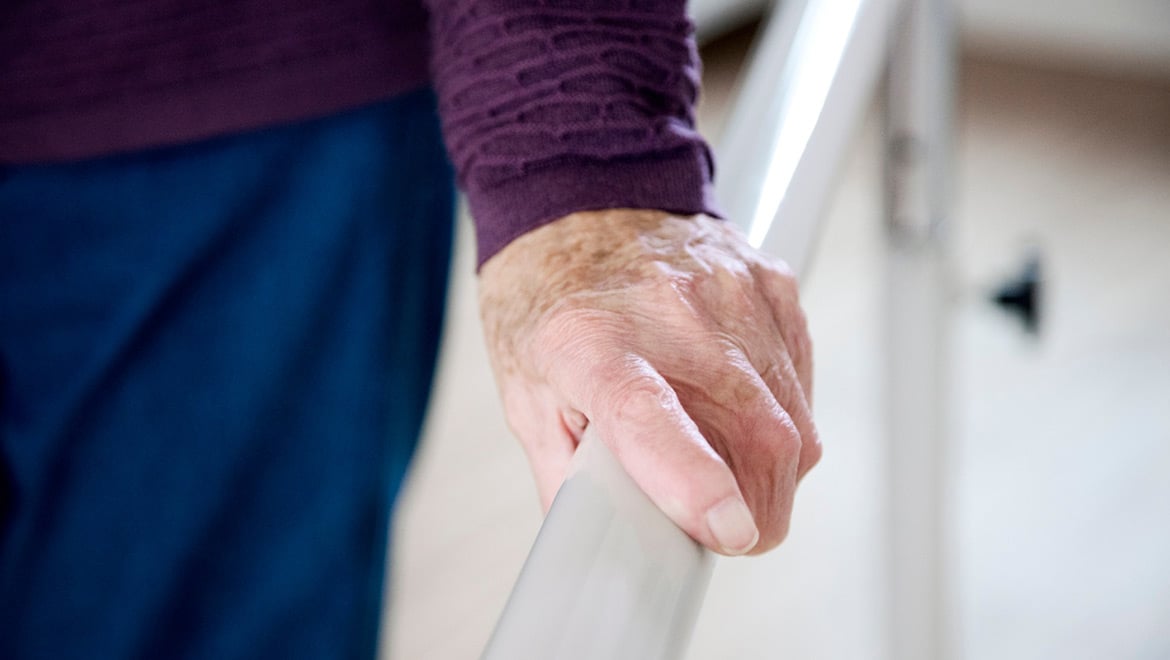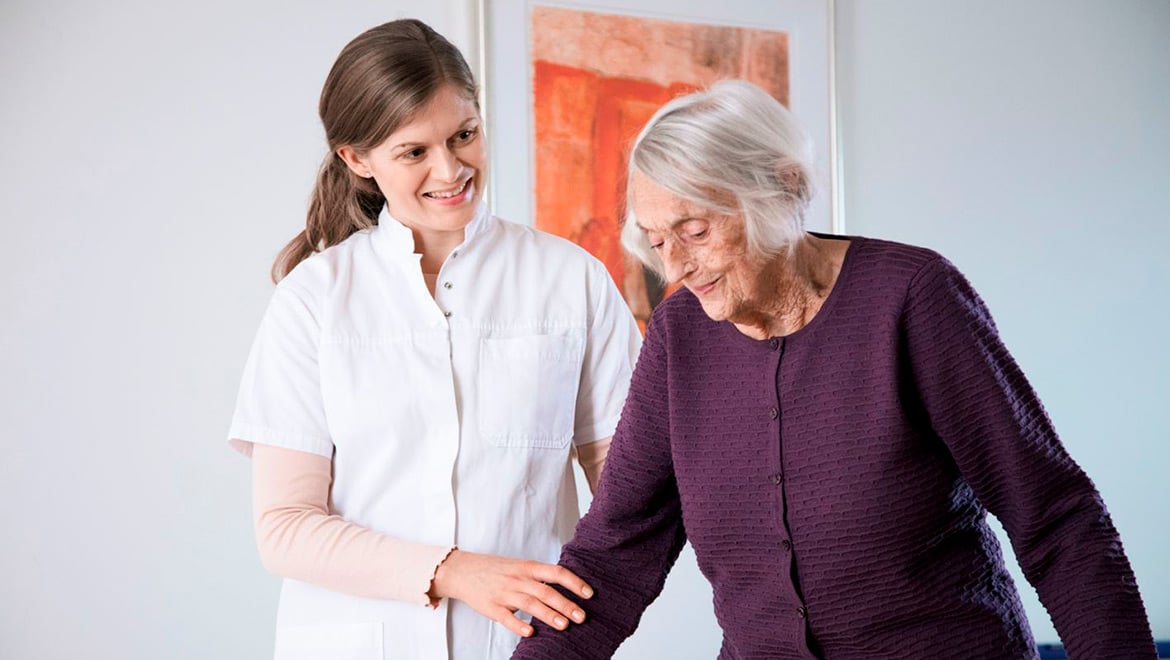Preventing caregiver injuries: How floor and ceiling lifts can help
Routine care tasks should not put caregivers at risk. Caregivers perform transfer, repositioning and hygiene tasks many times throughout the day. If these essential care tasks are not performed with the right equipment, care processes and skills, they can put caregivers at risk of musculoskeletal disorders (MSD) and injury. It is recommended to use of the right mechanical assistive aids that can improve caregiver safety and reduce the high costs related to caregiver injury.¹
“Mechanical lifts reduce the back-compressive forces on nursing personnel by an estimated 60%”²
Maxi Move® Floor lift with transfer sheet
The use of floor lifts, such as Maxi Move, can reduce work-related injuries. If the patient is ready for transfer out of bed, this may involve utilising equipment such as a patient lift system initially, until assisted standing transfers to the chair can be achieved. Appropriate transfer equipment and seating is fundamental to meet this aim and ensure patients at varying levels can sit out safely. The use of mechanical lifting equipment (in addition to other assistive patient handling devices) is a key component of any patient handling or caregiver injury program³
A BIOMECHANICAL LABORATORY STUDY AND PSYCHOPHYSICAL EVALUATION SHOWED THAT MECHANICAL LIFTS²:
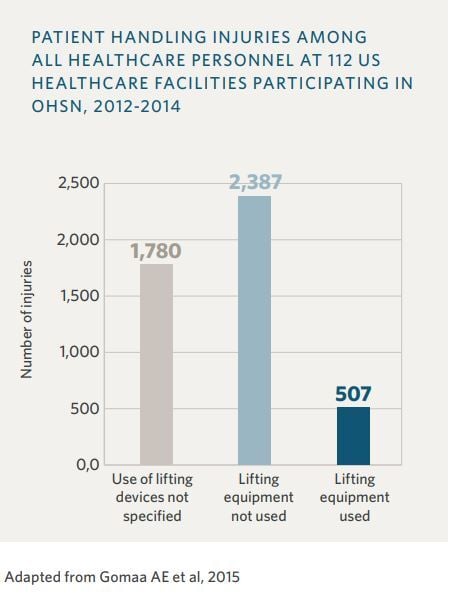
- Reduce the back-compressive forces on nursing personnel by an estimated 60%
- Remove 66% of the lifting activities per transfer
- Increase the residents’ perceptions of comfort and security, as compared with being manually lifted
This shift is related to working and care efficiencies and towards cost reduction¹. An Occupational Health Safety Network study found that, of the 62% of injuries that included data on lifting equipment, almost 83% of the injuries occurred when lifting equipment was not used, while only 18% of the injuries occurred when equipment was used⁴.
Maxi Sky® 2 ceiling lift with transfer sheet
Biomechanical loading results of a study identified that ceiling lifts, such as Maxi Sky 2, require lower forces to operate than floor lifts, and that caregivers in a home environment should be provided with a ceiling lift to reduce the risk of injury5.
“Addressing the need for ceiling lifts early within the facility planning is crucial to accommodate installation requirements of such equipment.”
Space aspects related to provision of safe patient handling equipment can also be addressed with the provision of ceiling lifts, with ceiling lifts requiring less space compared with using passive floor lifts.
There is a move towards the installation of ceiling lifts to manage a growing dependent patient population and address working safety and efficiencies of caregivers when delivering the care process. Working efficiencies with the reduced availability of care workers are high on the agenda in many European countries such as Germany, UK and The Netherlands. Working efficiencies are possible with the use of ceiling track lift and stretcher slings and the number of nurses required is significantly reduced.
“Patient handling transfers using a multifaceted approach including use of appropriate devices such as ceiling lifts, floor lifts and repositioning/transfer devices can help to reduce injury amongst caregivers”
Workplace injuries amongst caregivers as a result of patient handling are common. Patient handling transfers using a multifaceted approach including use of appropriate devices such as ceiling lifts, passive and active floor lifts and repositioning/transfer devices can help to reduce injury amongst caregivers and promote healthier outcomes for those affected by mobility challenges. The associated cost benefits to the organisation are recognised, but to be successful there is overwhelming evidence that implementation of any device(s) has to be accompanied by the right type of equipment in sufficient numbers and in appropriate locations alongside a programme of education, support and funding throughout the organisation.
Supporting you to create safe and efficient environments for work and care
Based on validated external evidence and the latest guidelines, ARJO INSIGHT ASSESSMENTS provide you with an objective guidance on the type and number of equipment required to promote mobility and workflow efficiency whilst reducing the risk of strain and injury to your caregivers.
Book a demonstration of our Patient Handling Solutions
Discover the benefits of our Patient Handling Solutions with a personalized demonstration from an Arjo representative. Click here to book a demonstration.
References
1. Matz M (2019), Patient Handling and Mobility Assessments, 2nd Edition
2. Collins JW, et al. Inj Prev 2004; 10(4):201-211
3. Matz M, 2019. Patient Handling and Mobility Assessments: A White Paper Second Edition
4. Gomaa et al. Occupational Traumatic Injuries Among Workers in Health Care Facilities - United States, 2012-2014. Morbidity and Mortality Weekly Report Weekly 2015. Vol. 64. No. 15
5. Alamgir H, Yu S, Fast C et al (2008). Efficiency of overhead ceiling lifts in reducing musculoskeletal injury among carers working in long-term care institutions. Injury, 39:570-577

